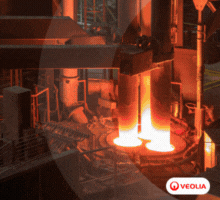Next Generation Vehicle Goes Public in Frankfurt
09/14/2007 - Stainless steel producers Outokumpu Oyj, ThyssenKrupp Nirosta, and ArcelorMittal–Stainless Europe support Phase III of the Next Generation Vehicle project, which was unveiled this week at IAA 2007 in Frankfurt.
This week, during the IAA 2007 in Frankfurt, an update was presented on Phase III for Next Generation Vehicle, a joint research project supported by automotive and steel partners including Audi, BMW, Fiat, DaimlerChrysler, Outokumpu, Saab Automobiles, ThyssenKrupp, ArcelorMittal–Stainless Europe (Ugine&Alz), and Volvo Cars. The presentation also highlighted the project’s implications for tomorrow’s cars in consideration of sustainable development.
Less emissions through less weight — While it is difficult to picture the world without cars—transportation is simply essential to the way we live—it has become evident that cars’ effects on the environment are severe. Society’s awareness of the environmental impact is leading to increasing pressure for change in the near future. Although there are many things about today’s cars that will need to be altered in order to meet the challenge of sustainability, some things are more important than others. The Next Generation Vehicle Project is concerned with one crucial factor: weight.
An obvious truth about tomorrow’s cars is that they will need to weigh less—much less. Cars will still need to be safe, however, as well as drivable, affordable, and attractive, or there will be no future at all for them. These factors all provide intriguing challenges. The environmental aspect will have to be integrated with all the other aspects.
Next Generation Vehicle is a research project with the objectives of improving sustainability in car manufacturing. Most of a car’s weight is attributable to steel. This means that research into the production of lighter steel components might be a planet saver. Radical reduction of weight equals radical reduction of emissions.
Meeting the challenge of sustainability — For the Next Generation Vehicle Project, the main challenge lies in meeting increased environmental demands without compromising safety. These two factors traditionally collide, for obvious reasons: It’s easy to produce a safe car, if weight is not important. It’s likewise easy to produce an environmentally adapted car, if safety is not an issue. However, safety and environment are indeed issues when discussing tomorrow’s cars.
The Next Generation Vehicle Project can provide solutions to the evident problem of meeting the demands of environment without compromising safety. Cars built with high-strength stainless steel materials weigh less, and thus pave the way for lowered fuel consumption. The stainless materials tested and used in the project create excellent opportunities for the car industry, since they result in light vehicles that still meet every safety demand.
Affordability and environment — The most obvious interface between affordability and environmental demands is, again, weight. Cars built with high-strength stainless steel materials weigh less, thus enabling increased fuel economy. It’s all in the manufacturing process.
Stainless steel is very process-able—it can be formed into complex parts, resulting in radically reduced amounts of scrap. Stainless steel can also be made extremely thin, making it cost-effective as well as in tune with the project’s environmental aims.
Development through partnership — The Next Generation Vehicle Project unites steel and automotive partners, as well as software partners. Research into the future role of stainless steel is vital to the steel and the automotive industries alike. By working together in this long-term project, the partners will be able to implement the results in their respective corporations.
This will help to expedite the transition to using lightweight materials in car production.
Research partners for the Next Generation Vehicle Project are Audi AG, Bayerische Motoren Werke AG, Centro Ricerche Fiat, Daimler Chrysler AG, Outokumpu Oyj, GM/Saab Automobiles AB, ThyssenKrupp Nirosta, ArcelorMittal–Stainless Europe (Ugine&Alz), and Volvo Car Corp. Visit Next Generation Vehicle at http://www.ngvproject.org/index.htm



.jpg?lang=en-US&ext=.jpg)
-(1).gif?width=220&height=200&mediaprotectionhash=8011a71ede637cd523c67b1296fc49e6151560fde821a46f29cc85998cc76615&ext=.gif)


